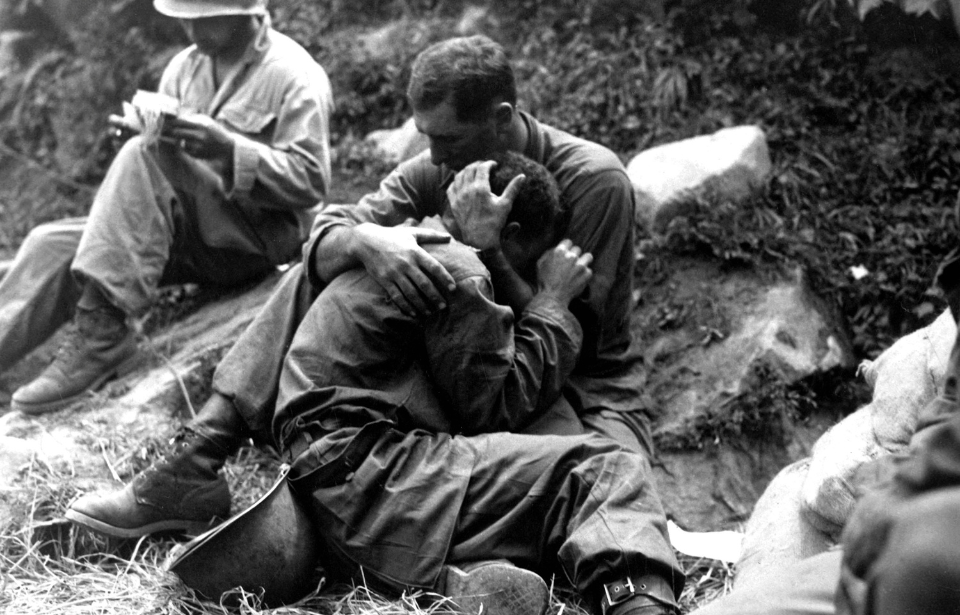Above is a photo of a grieving American GI whose friend was killed in action (KIA) while fighting the Korean War. He was a radio operator who’d just learned his replacement had been killed, and he’s seen receiving comfort from a comrade, a man he didn’t know well. In the background is another reading through casualty forms to complete the appropriate paperwork once the fighting ends.
The juxtaposition of these two acts makes the image incredibly powerful. It was captured by Sfc. Al Chang, a US Army photographer, near Haktong-ni on August 28, 1950. Not only did Chang capture the emotional and powerful moment, he also had a noteworthy military career – in fact, he was a dock worker at Pearl Harbor when it was attacked by the Japanese on December 7, 1941.
Chang went on to enlist in the military, serving during the Second World War, in Korea with the 5th Regimental Combat Team and throughout the Vietnam War. In all cases, he was a photographer with the Army. His most notable works include the official Japanese surrender aboard the USS Missouri (BB-63) on September 2, 1945.
His photo of the grieving GI, however, is arguably his most famous photo, becoming synonymous with the Korean War.
More from us: Korean War Helicopters That Were Vital to Those Serving In the Conflict
The image was featured in the New York City Museum of Modern Art’s The Family of Man photo exhibition. Some 503 images captured from around the world were featured in the gallery in 1955, after which they toured the globe for eight years.
